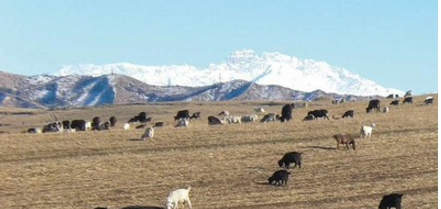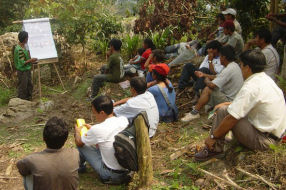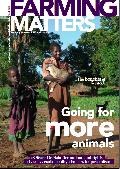Since the break up of the Soviet Union, small livestock keepers in Tajikistan have witnessed a worrying trend: using manure for fuel has negatively impacted soil fertility, resulting in a dramatic reduction in crop yield, and a matching drop in farmers’ livelihoods. More intensive livestock keeping could help curb this trend.

When I first travelled the winding road from Dushanbe to Kulyab, in southern Tajikistan, I was stunned by the beautiful scenery but shocked by the barren hills that lined the road. There used to be rich forests in this area, and arable land where farmers kept cattle, sheep and goats. Today, the only trees that grow are in and around the settlements, and overgrazing has razed the landscape.
Before the break up of the Soviet Union, farming practices were more sustainable – large farms practised crop rotation and grew fodder crops such as luzerne and esparcet. Farmers also collected manure, storing it and using it as organic fertilizer; now, with deforestation depleting firewood supplies, they are forced to use manure for fuel. As a consequence, soil fertility is decreasing and farmers are having to depend more and more on expensive, and often scarce, artificial fertilizers. According to the German Welthungerhilfe, as much as two to eight tons of manure each year is used by a single household for cooking purposes. In parts of the Khatlon region, this represents 90 percent of all available manure. Crop yields are falling and Tajikistan badly needs solutions to curb this growing trend.
From state-funded to private initiatives
Some of the agricultural measures that might offer a way out include crop rotation, cultivating leguminous plants and fodder crops for livestock, and more intensive livestock farming. Also, keeping manure under cover would improve its quality, thus reducing the number of applications needed, saving money and reducing the need for artificial fertilizer. NGOs were keen to start activities to promote and develop such technologies together with the farmers. While awareness about the advantages of using manure is evident, Tajikistan lacks the necessary knowledge to implement it.
Agricultural Tajikistan
Over 60 percent of Tajikistan’s population works in the agriculture sector and it accounts for 30 percent of the GDP. A typical farmer cultivates around 3 hectares and keeps livestock. Land reforms are still underway, so land ownership is complicated. Most large state farms and cooperative farms have been subdivided. Some smallholders have formed collectives, since these have easier access to credit, inputs and machines.
Farmers earn a meagre income, so a large proportion of the labour force, mainly young men, has migrated to Russia. Between 1991 and 1997, agricultural output dropped by 55 percent, but since 1997 it’s on the rise again. Cotton and wheat are the country’s two main cash crops, accounting for 70 percent of arable land. Until recently, farmers were forced by law to grow cotton, but now they enjoy the freedom to grow the crops they choose.
In 2005, the Agriculture Training and Advisory Centre (ATAC) was set up in Kulyab, in the Khatlon region, to promote such knowledge. As in many other transition countries, governmental extension services are becoming less prevalent. Private extension initiatives (around 25 NGOs) are emerging and taking over this function.
The ATAC coaches individual farmers and train farmer groups. They use the Farmer Field School approach, both for crops and livestock. More recently they also started to develop value chains by connecting farmers with producers. In 2009, ATAC started a process of developing new advisory products, working closely with farmers and extension staff. Several factors emerged as possible solutions to the farmers’ problems; as well as intensive livestock-keeping, these included minimum tillage and the growing of apples and early vegetables. Cultivating commercial crops such as tomatoes and cucumbers also proved a viable enterprise since commercial crop farmers are willing to pay a good price for manure. There are plans to establish experimental crop plots and to test livestock-keeping systems using the Participatory Technology Development extension method – activities that should yield materials for use by other private extension agents in Tajikistan, benefiting farmers outside the Khatlon area. ATAC also plans to develop commercial bull fattening, small-scale egg production and to provide a first-aid manual for farmers.
For more information please contact Willem van Weperen (willem.van.weperen@gmail.com), Agriculture Extension Advisor, Kulyab, Tajikistan.


